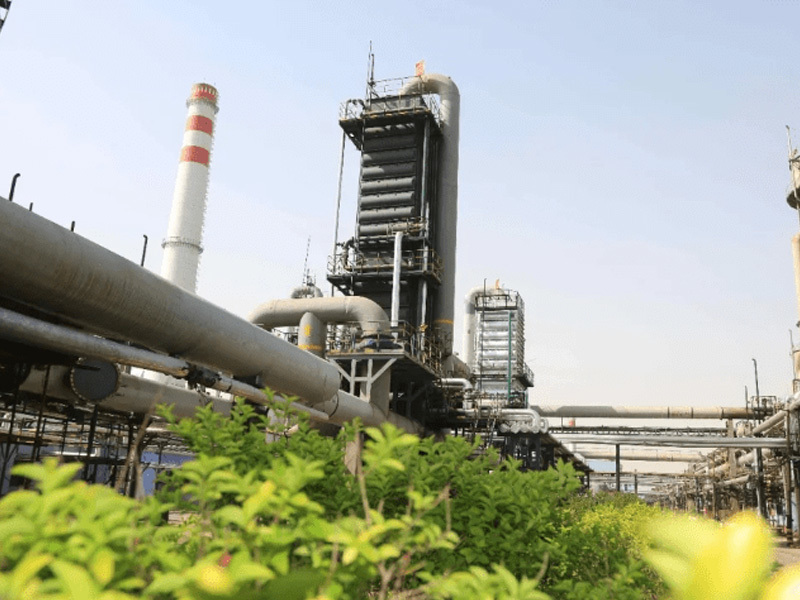Four enterprises in our county have entered the public list of national high-tech enterprises!
Recently, the Office of the National Leading Group for the Accreditation and Management of High-tech Enterprises, in accordance with the relevant provisions of the "Administrative Measures for the Accreditation of High-tech Enterprises" and the "Guidelines for the Accreditation and Management of High-tech Enterprises", announced the second batch of high-tech enterprises identified and reported by the Henan Provincial Accreditation Agency in 2023. List of technology enterprises.
The list of high-tech enterprises is publicized! Qi County 4 Enterprises on the List
Recently, the Office of the National Leading Group for the Identification and Management of High-tech Enterprises, in accordance with the relevant provisions of the "Administrative Measures for the Identification of High-tech Enterprises" and the "Guidelines for the Identification and Management of High-tech Enterprises", the second batch of high-tech enterprises identified and reported by the Henan Provincial Accreditation Agency in 2023 The list is publicized
Analysis and Discussion on Coal Chemical Wastewater Treatment Technology
China's coal resources are relatively rich, and the coal-to-oil chemical industry is an important part of China's industry. The normal production and operation of coal-to-oil chemical enterprises will produce a large amount of wastewater, which has the characteristics of high organic content, difficult degradation, high concentration and complex composition. If effective treatment measures are not taken, it will cause serious harm to the ecological environment around the enterprise. Therefore, it is necessary to do a good job of treatment and control the discharge of wastewater.
How should maleic anhydride production wastewater be treated?
At present, there is no excellent treatment method for maleic anhydride production wastewater in the industry. The following is a summary of the treatment experience.
Should the data center build a water reuse system?
The main purpose of data center water is to dissipate heat (that is, to cool IT equipment). The traditional way to cool a data center is to use a water-cooled chilled water system. In these systems, cold water is distributed in the refrigeration unit of the computer room. Fans blow through the chilled water pipes to provide cool air to the IT equipment. The water then flows back into the cooling device to be re-cooled. Water-cooled cooling systems rely on cooling towers to absorb heat. The cooling tower is a large box-shaped unit that uses water and air to exchange heat and cold after flowing in contact to generate steam, and to take away heat through steam volatilization to achieve the effect of evaporating heat and reducing water temperature.
What are the main characteristics of biopharmaceutical wastewater?
Biopharmaceutical wastewater treatment is currently a very important and very difficult to deal with wastewater in the wastewater treatment industry. Biopharmaceutical refers to the use of organisms or biological processes to produce drugs, mainly including antibiotics or antibiotics generated by the method of fermentation of bacteria, which will produce corresponding pharmaceutical wastewater in its production and processing wastewater. Today, Zhongke Boyun will show you what are the main characteristics of biopharmaceutical wastewater.
What is the difference between water reuse and wastewater reuse?
The term "reclaimed water" is relative to upper water (water supply) and lower water (drainage). Water reuse technology refers to the residential life waste (sewage) water (bath, washing, laundry, kitchen, toilet) centralized treatment, to reach a certain standard back to the community for greening irrigation, vehicle flushing, road flushing, household toilet flushing, so as to achieve the purpose of saving water.
Common Treatment Process of Pharmaceutical Intermediate Wastewater
Pharmaceutical intermediate wastewater has the characteristics of high COD, high ammonia nitrogen, high salt and high chroma. The so-called pharmaceutical intermediates are actually some chemical raw materials or chemical products used in the process of drug synthesis. This chemical product does not require a drug production license and can be produced in an ordinary chemical plant. As long as it reaches some level, it can be used for the synthesis of drugs. The synthesis steps are long, the intermediates are complicated, and the molecular structure is stable, so that the composition of pharmaceutical intermediate wastewater is very complex, containing a large number of toxic and refractory organic compounds, as well as Cl-, SO42-and other inorganic salts. It is one of the most difficult points in the chemical sewage treatment industry.
Common Treatment Methods of Fluorine-containing Wastewater
The main source of fluorine-containing wastewater is the fluorine-containing "three wastes" discharged from industrial production. The industries involved mainly include aluminum electrolysis, steel, cement, bricks and tiles, ceramics, phosphate fertilizer, glass, semiconductors, pharmaceuticals, etc. The common feature of these industries is that fluorine-containing minerals are the main raw materials or auxiliary raw materials. In the process of smelting and production, fluorine is decomposed from minerals to produce fluorine-containing wastewater.
China Sales Department
Address:Industrial road west,186, Qixian County, Henan Province, 456750 ,China,
Los Angeles Sales Department, USA










